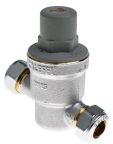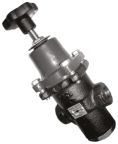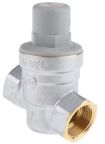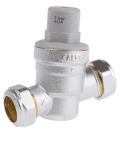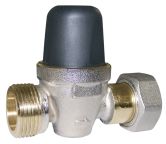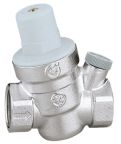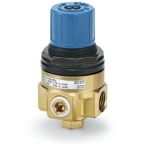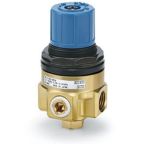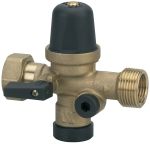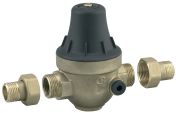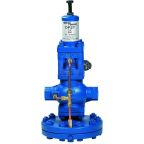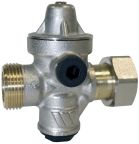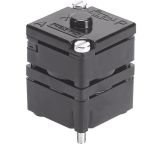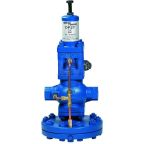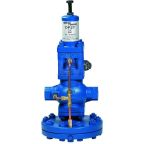Pressure Reducing Valves
Pressure Reducing Valves are speciality valves designed to protect water installations against excessive pressure from the water supply. They can be used be used in the household installation and for industrial and commercial applications. They do not only regulate the pressure within installations but also reduce noise and water consumption and maintain constant liquid flow level. You can learn more in our guide to pressure reducing valves.
Pressure Reducing Valves can be equipped with a gauge that displays current pressure level and allows to monitor a real-time situation.
How the pressure reducing valves work?
The pressure reducing valves use a globe style, spring-loaded body type and heat resistant diaphragm. The diaphragm connected to the outlet of the valve acts upon the spring. The spring holds a pre-set tension on the valve seat, installed with the pressure control and release the pressure once the desired level has been reached.
Benefits of using pressure Reducing Valves:
• Water Saving – the higher the water supply pressure means the greater water flow and water wasteful is. For domestic and commercial use the high water pressure isn't necessary. Pressure reducing valves control the pressure flowing to all appliances and outlets for a lower, more functional water pressure.
• Energy Saving – Water heating systems work more efficiently and consume less energy to heat up to low-pressure water. Approximately, 30% of water used in households is heated and energy is required to heat it. Reducing the pressure and amount of water that flow through the system we reduce at the same time the energy that is needed to heat it up.
• Wastewater Saving – Lower pressure pumped through the water installation means less water used in the household system. It effects on financial benefits and reduces the wastewater treatment.
Popular Searches
Related links
- A Guide to Pressure Reducing Valves
- Hydraulic Pressure Reducing Valves
- RS PRO Pressure Reducing Valve, 22 mm Compression
- RS PRO Pressure Reducing Valve, 1/2 in BSP Female
- RS PRO Pressure Reducing Valve, 15 mm Compression
- Watts Pressure Reducing Valve
- Spirax Sarco Pressure Reducing Valve, 1/2 in BSP Female
- Bosch Rexroth Hydraulic Pressure Reducing Valve 75bar

